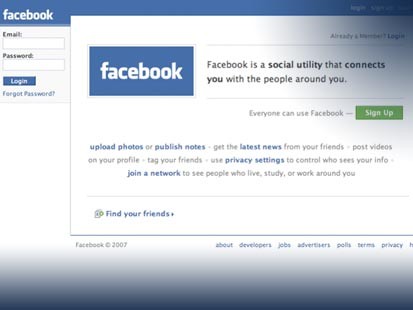Fred Cavazza has been for years one of the main Internet expert in France. He's providing us on
his blog with a great analysis of the Social Media Landscape. As you can see it below, this is a very complex mapping as there is a lot of service/competition in the market. Thus, this is a good division by usage. It is good sometimes to see the bigger pictures to see how social media is evolving. Here is the article of Fred Herein.

Social Media Landscape (redux)
The large size version is here : Social Media Landscape (redux).
Four Main Usages
The various tools and services displayed on this landscape are listed bellow.
1. Expressing tools allow users to express themselves, discuss and aggregate their social life:
- Publicatin tools like blogs ( Blogger, Typepad, Wordpress), wikis ( Wikipedia, Wetpaint, Wikia), microblogs ( Twitter, Tumblr, Identica), citizen news ( Digg, Newsvine, AgoraVox) and livecast ( JustinTV, Ustream, BlogTV) ;
- Discussion tools like forums ( phpBB, Phorum) and video forum ( Seesmic), instant messengers ( Y! Messenger, Live Messenger, Meebo, eBuddy), comments services ( IntenseDebate, Cocomment, Disqus, BackType) and 3D chats ( IMVU, Habbo, WeeWorld, vSide) ;
- Aggregation tools ( FriendFeed, SocialThing, LifeSteam, Profilactic, Plurk...).
2. Sharing tools allow users to publish and share content:
- Content sharing for videos ( YouTube, DailyMotion, Vimeo), pictures ( FlickR, SmugMug, Picasa, Fotolog), music and playlists ( Last.fm, iLike, Deezer), links ( Delicious, Magnolia, Reddit) and documents ( Slideshare, Scrib, Slideo) ;
- Product sharing with recommendations platforms ( Crowdstorm, ThisNext, StyleHive), collaborative feedback platforms ( FeedBack 2.0, UserVoice, GetSatisfaction) or swaping platforms ( LibraryThing, Shelfari, SwapTree) ;
- Place sharing with tools based on local adresses ( BrighKite, Loopt, Whrrl, Moximity), on events ( Upcoming, Zvents, EventFul, Socializr) and on trips ( TripWolf, TripSay, Driftr, Dopplr).
3. Networking tools allow users to search, connect and interact with each other's:
- Search networks allowing users to find ex-classmates ( Classmates, MyYearBook, Alumni) or persons ( MyLife) ;
- Niche networks ( Boompa, Dogster, PatientsLikeMe, Footbo) ;
- BtoB networks ( LinkedIn, Plaxo, Xing, Viadeo) ;
- Mobile networks ( Groovr, MocoSpace, ItsMy, Zannel) ;
- Tools to build an online network ( Ning, KickApps, CrowdVine, CollectiveX).
4. Playing services that now integrate strong social features:
- Casual games portals ( Pogo, Cafe, Doof, Kongregate, PlayFirst, PopCap, BigFish, Prizee) ;
- Social games portals ( Zynga, SGN, ThreeRings, PlayFish, CasualCafe, ChallengeGames) ;
- MMORPGs ( World of Warcraft, EverQuest, Lord of the Rings Online, EVE Online, Lineage, Dofus, Runescape) ;
- MMOs ( Drift City, Kart Rider, Maple Story, Audition, Combat Arms, Quake Live) ;
- Casual MMOs ( Puzzle Pirates, Club Penguin, Neopets, Gaia Online, SmallWorlds, OurWorld).
From Social Networks to social Platform
At the center of this landscape we will find former social networks, which have evolved to progressively integrate more and more functionalities and morphed themselves into social platforms. The notion of 'platform' is particularly relevant since those network have the ability to host applications (mostly the one you find on the four main usages).
We can split social platforms into two groups: The First Generation which have been existing since more then 5 years and gather between 50 and 200 millions of users ( Facebook, MySpace, Friendster, Bebo, Orkut, Skyrock, Hi5, Windows Live...) and The New Wave of social players which have a similar offering and a fast growing audience (between 20 and 50 millions users - Netlog, Imeem, Piczo, Lexode, Hyves, Buzznet, Xanga, Zorpia...).
I won't enter in the debate to foresight which platform will grow faster or which will appeal the most to youth audience but I anticipate a rough competition for Facebook which is stile experiencing cash flow problem by sticking to the advertising model while those new social players have integrated micro-transactions and premium membership in their business model.
Google and Yahoo! are still absent from the social scene (wait, maybe not...)
You will also notice in this landscape the discretion of Google and Yahoo! which are 'only' represented by services that did not managed to break through the social scene (while being strong references, Blogger, YouTube, FlickR cannot be considered has dominant social platforms). Let's be honest: MySpace and Facebook decently steal the spotlight from Google and Yahoo!.
Wait... maybe not if you consider Google as a being in a much more favorable situation with lower-level services like Gmail (one needs an email to register Facebook, right?) or Google Maps (can you count the number of social services relying on Google mapping tool?). Add to this there current cash situation and it leaves them plenty of time to sharpen their social strategy (Maybe by buying Twitter or FriendFeed, or booth!).
The same is true for Yahoo! which can rely on a massive user base (still outnumbering Facebook's one) and essential social bricks like Delicious, Yahoo! Pipes, MyBlogLog and the promising Fire Eagle.
Did I mention Microsoft? Yes, Microsoft, those guys behind Hotmail, MSN and Windows Live. Ignoring them would be a big mistake and Mark Z. was more than happy to welcome them in FB's capital.
From this pint of view, I expect a very thought battle around authentication services ( Facebook Connect, Google Accounts...) allowing social platforms to exist outside of their boundaries and to export their members' social graph. Big players like Google, Yahoo! and Microsoft have to emphasis their legitimacy as historical web players to keep control over their users.
I strongly recommend you to pay attention to those different services (yes, there is a life outside Facebook) and I shall meet you next year for a third version!






















